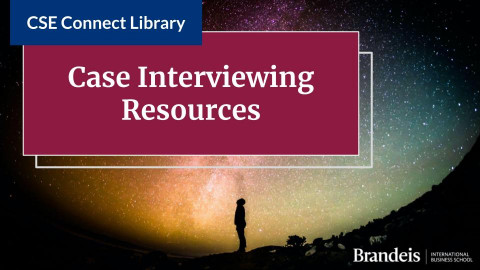Case Interviewing 101
This resource will teach you the basics of case interviews. Check out Case Practices with Geri and Case Questions Interactive to learn more and practice your case interviewing skills. This resource with a brief overview of the traditional case interview structure.
Traditional Case Interview Structure:
Part 1: The Opening/Introduction
Interviewer: *Reads you a short case*
You: *repeat back the case facts & the problem the interviewer wants you to solve (i.e. increasing profits, or decreasing costs, or increasing market share)*
You: Ask “Are there any other objectives?”
Interviewer: Answers “Yes or no”
You: Ask “May I have a moment to collect my thoughts?”
Interviewer: “Yes.”
You: *Begin thinking critically about the problem and what questions you need to ask in order to answer the key objectives/question(s)* – the structures outlined in Case In Point by Marc Cosentino are helpful here
Part 2: Q&A and Analysis
You: *After collecting your thoughts, you will begin asking relevant questions to the interviewer to uncover more information about the problem/company to help you answer the key question(s). Ask one question at a time and wait for the interviewer to either give you more information or tell you that they do not have that information available. As you begin to uncover more information you will likely need to perform some math to help you arrive at your recommendations for next steps.* Note: It is important to walk the interviewer through your analysis as you obtain answers to your questions.
Part 3: Summary, Recommendations & Risk
You: Once you have all the information you need and have walked the interviewer through your analysis it will be time for you to wrap up your case interview. *First, you should summarize the case and the information you obtained from your questions. Next, transition to your recommendations for the future explaining how the conversation and your analysis helped you arrive at your recommendations. Finally, address the risk associated with each recommendation you provide. Assessing risk is important to show your ability to critique your own ideas and accurately analyze how risky your ideas are. Bonus points if you address both short term and long term recommendations.
Keys for Success:
- When performing any math, talk the interviewer through each step. The interviewer is trying to understand your reasoning and logic during the interview. Talking through the math will also help the interviewer help you in the event that your math is inaccurate.
- While you are doing math make logical assumptions to make the mental math easier for yourself. Typically you are not permitted to have a calculator during the interview. Examples of reasonable assumptions are that there are 350 million people in the US and 100 million households. For more mental math practice check out Case Questions Interactive (CQI).


